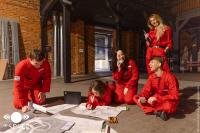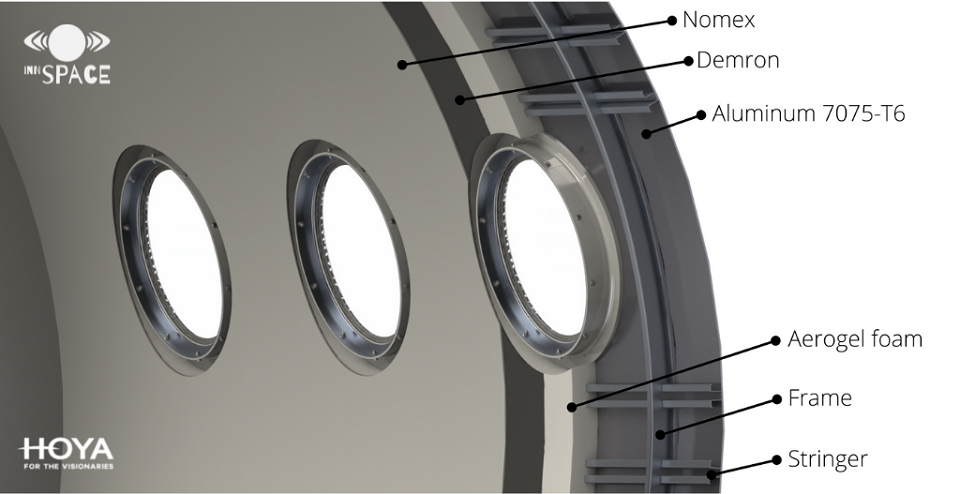Student support for the development of space tourism
The Innspace team, formed, among others, by one of our students, reached the finals of the international Student Aerospace Challenge competition. The team was awarded the Suborbital Day Special Prize for its work on radiation protection for passengers of a suborbital plane.
Five people worked on the awarded project: Hubert Gross (Rzeszów University of Technology), Magdalena Łabowska (Wrocław University of Technology), Dominik Tokarz (Warsaw University of Technology), Małgorzata Popiel (Adam Mickiewicz University in Poznań) and Renata Ferduła (Poznań University of Technology).
For passengers’ protection
- The subject of suborbital flights is gaining popularity due to the successes of companies such as Virgin Galactic or Blue Origin - says Hubert Gross from Rzeszów University of Technology, team leader. - It is also a topic that our team is eager to explore, as it is currently the cheapest way to implement space tourism.
The radiation shield on vehicles crossing the outer space line plays a key role in maintaining the passengers’ health. Radiation doses received during the suborbital flight exceed the acceptable norms many times, which may result in cancer or radiation sickness.
- That is why our team decided to develop a topic related to anti-radiation shields in suborbital airplanes - says Dominik Tokarz, our student from the Faculty of Power and Aeronautical Engineering, responsible in the project for the analysis of the influence of Earth's magnetosphere and atmosphere on the transfer of cosmic radiation, and the calculation of effective doses received by crew during a sub-orbital flight, and an analysis of the effectiveness of the proposed passive shields on the reduction of absorbed radiation.
Material challenge
Students approached the project comprehensively. Due to the number of applications and related needs, they decided to separate the work on the window cover and one for the supporting structure. They chose the materials very carefully.
- Each of the materials, apart from the function of the radiation shield for passengers, had to meet different types of challenges, such as stress transmission, protection against high temperature or fire protection - says Magdalena Łabowska from the Wrocław University of Technology.
In the subsequent layers of the load-bearing structure, the students used the light aluminum alloy 7075-T6 (it is used in aviation to create a light and durable semi-shell structure), silica aerogel foam (which has good insulating properties and protects passengers from high temperature when entering the atmosphere), Demron (a key material as it has the largest share in reducing the radiation dose received by passengers), and Nomex (protects against the possibility of fire spreading in the passenger compartment of the plane).
For the windows the team used three layers of materials: aluminosilicate glass (outside) - resistant to very high temperatures, silica aerogel (center) - reinforced with bromine to provide better radiation protection properties, and Vycor (inside).
It was the Innspace Team's third time in the Student Aerospace Challenge competition and the third award they have received for their projects. Probably not the last one, because the students already have new ideas. They now envisage building a base floating in the atmosphere of Venus that will allow for a more detailed study of the planet.









